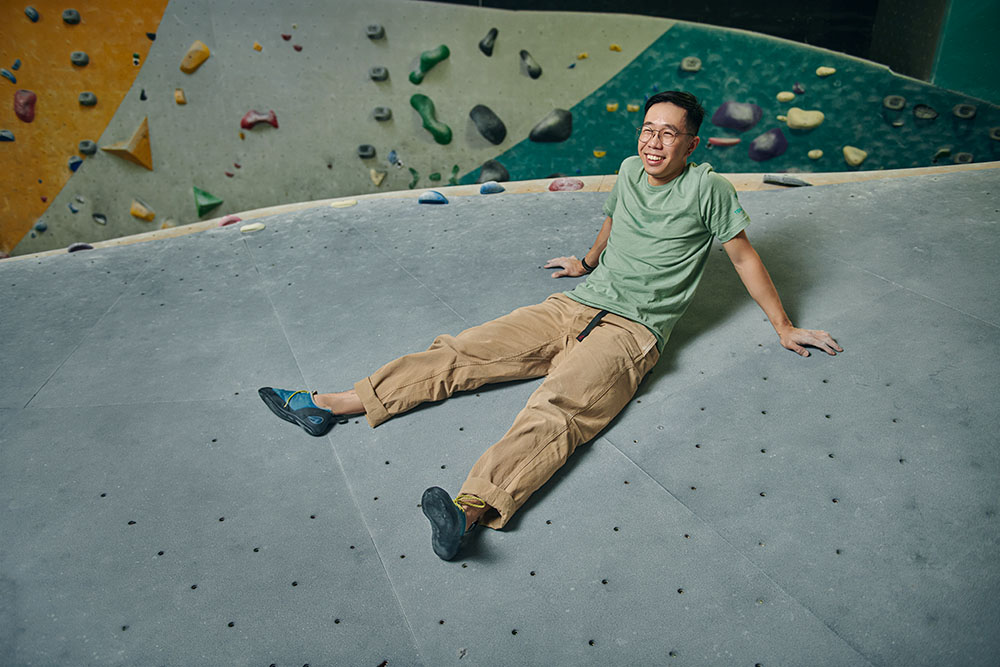
A living-donor kidney transplant didn’t just save An Pham’s life. It also gave him a renewed spirit and sense of adventure.
An Pham was walking to work in January 2022 when his phone started ringing. He doesn’t usually answer unfamiliar numbers, but something compelled him that morning to pick up.
It was the call that An had waited nearly five years to receive.
The caller explained they had found a kidney that was a match and asked An, then 25, if he was ready to proceed with a transplant.
“I didn’t need time to think,” An says. “I just blurted out, ‘Yes!’”
He didn’t yet know how special his transplant was going to be.
An has Alport syndrome, a genetic disease that leads to kidney failure, and he has known since childhood that one day a transplant would be necessary.
During his sophomore year of college, An started feeling unusually tired. After being evaluated by his nephrologist, he learned that his kidneys were failing. His doctor told him it was time to start dialysis and to join the waiting list for a kidney transplant.
An had been treated at Children’s Hospital Los Angeles for his kidney disease. Now that he was older, his care was transferred to Keck Medicine of USC.
Living-donor kidney donation gives unexpected gift
A kidney transplant is the best treatment option for people with end-stage renal disease.
But the waits can be long and difficult. According to the National Kidney Foundation, most people receive a new kidney in three to six years, but wait times tend to be longer in California.
A transplant not only improves quality of life, but it can also dramatically extend
a person’s life, says Santhi Voora, MD, a transplant nephrologist at the USC Transplant Institute.
For someone in their mid-20s, like An, a kidney transplant adds about 20 years to their life expectancy compared to a person receiving dialysis, Dr. Voora says.
An was 20 when he started dialysis — a treatment that performs the work of the kidneys, removing waste and excess fluid from the blood — and got on the transplant waiting list. He often felt weak, a common issue for dialysis patients, but was determined to finish college.
An, an El Monte resident, maintained a strict diet and exercise routine to keep up his strength. He also made regular visits to multidisciplinary specialists at the USC Transplant Institute.
“The team at Keck was extremely professional,” An says. “I always felt like I was in good hands.”

Although An was on a wait list to receive a kidney from a deceased donor, he learned that he was going to get a kidney from a living donor matched through the National Kidney Registry as part of a paired donation chain.
Most live donations come from a person known to the recipient, typically a family member or friend.
But in An’s case, the donor was a stranger who had decided for altruistic reasons to donate a kidney to someone in need.
“My doctors and nurses were really excited, and they told me that I had basically won the lottery,” An says.
Organs from living donors provide best outcomes
The number of nondirected living organ donations is increasing, but they are uncommon.
Of the 211 kidney transplants performed at Keck Hospital of USC in 2022, only 36 came from living donors. Of that group, just four came from people unknown to the recipient.
“It is a really special thing when it happens,” Dr. Voora says, adding that living donations offer patients the best possible outcomes — including immediate organ function after surgery and a longer life span of the organ. It also significantly shortens the wait time for a transplant.
Which is why Keck Medicine offers many resources to guide the donation process.
It operates a wellness program to help potential donors overcome modifiable health problems, such as being overweight, so they may become candidates for donation, and it has teamed up with outside programs to help donors get reimbursed for time off work or for travel expenses related to organ donation.
“This is something we are doing to try to increase the number of living donations and help more of our patients get the transplants they need,” Dr. Voora says.
My doctors and nurses were really excited, and they told me that I had basically won the lottery.
An Pham, patient, USC Transplant Institute
New kidney boosts health, energy and mood
Just a few days after receiving his new kidney, An noticed big changes in his energy and mood. He also saw dramatic improvement in his levels of hemoglobin — a protein in red blood cells that carries oxygen — which were consistently low while on dialysis.
Several weeks after the transplant, An was in the gym to improve his muscle strength.
Soon after, he pined for something that had been impossible for many years: adventure.
“I always knew I wanted to become a rock climber and to explore nature,” An says. Last fall, he began climbing at indoor gyms around Los Angeles and he has since scaled boulders in Joshua Tree National Park.
With renewed momentum and future plans to complete a triathlon, An remains humbled by his path to transplant.
“I don’t know who donated their kidney to me,” he says. “That person’s selflessness really touched my heart and changed my life.”
Topics


